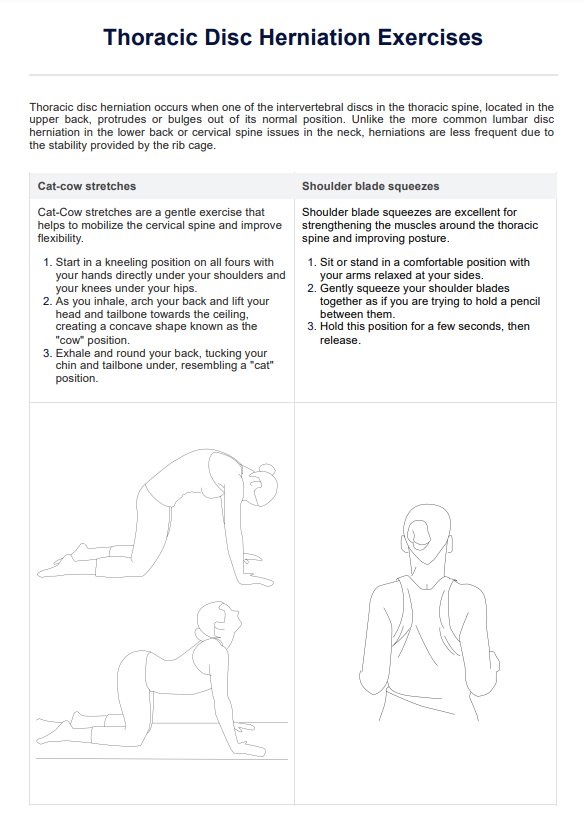Treating a herniated disc in the thoracic spine typically involves a combination of physical therapy, specific exercises, pain management techniques, and sometimes medications to reduce inflammation. In severe cases, surgical intervention may be necessary to relieve pressure on the spinal cord and nerves.

Thoracic Disc Herniation Exercises
Learn Thoracic Disc Herniation Exercises with Carepatron's free PDF. This handout has examples of exercises to help alleviate symptoms and improve mobility.
Thoracic Disc Herniation Exercises Template
Commonly asked questions
Avoid activities that involve heavy lifting, twisting, or any sudden movements that can exacerbate the condition and lead to further injury. It's also important to refrain from sitting or standing in poor posture for prolonged periods, as this can increase pressure on the herniated disc.
The best sleeping position for a thoracic herniated disc is on your back with a pillow under your knees to maintain the natural curve of your spine and reduce pressure on the disc. Alternatively, sleeping on your side with a pillow between your knees can also help maintain spinal alignment and reduce discomfort.
EHR and practice management software
Get started for free
*No credit card required
Free
$0/usd
Unlimited clients
Telehealth
1GB of storage
Client portal text
Automated billing and online payments











